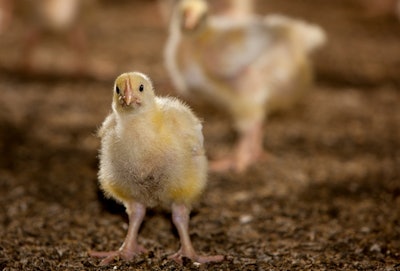
Autism spectrum disorder (ASD) could potentially be triggered by certain chemicals, according to research that utilized chicks as animal models conducted by Professor Emeritus Toshiya Matsushima at Hokkaido University.
While the causes of ASD have been investigated, there are still many questions left unanswered. To help investigate the issue, Matsushima and his research team performed a study that found an ASD-like behavioral impairment in chicks, which could suggest how ASD develops in humans.
Disruption of the nicotinic acetylcholine receptors (nAChRs), which are critical for neurodevelopment, in chick fetuses impairs the preference for animate objects, which is similar to ASD behavior in humans. Because a significant indication of ASD is the preference for animate objects such as face configuration and biological motion (BM), the movement of a biological organism, Matsushima’s team used chicks to study the preference of BM.
Chicks were chosen for the study because they spontaneously exhibit BM preference, while common animal models used in research such as rats and mice do not. Like humans, chicks exhibit a preference for BM early in life, which is related to the social attachment formation by imprinting.
Multiple other advantages of using chickens to study ASD were listed in the research paper including: chickens and humans have a similar phenotype, the short incubation time for chicks allows for a quick evaluation of research variables such as the effects of chemicals and the time course and effective dose of chemicals can by precisely administered and determined due to chicks hatching from shells and not being birthed.
The research
Researchers hypothesized that spontaneous movement of fetuses is critical for the development of BM preference. Therefore, fertilized eggs were injected with ASD-risk chemicals. Then, researchers performed tests to identify fetal movements. After hatching, BM preference was evaluated again. White Leghorn chicks were used in the study.
The chemicals injected, Ketamine, tubocurarine, methyllycaconitine and imidacloprid, all acted on nAChRs and significantly reduced BM preference in the chicks without impairing imprinting. The researchers found that if transmission via nAChRs is inhibited, the BM preference is lost, and chicks fail to form selective social attachment to biological objects.
While the results suggest that exposure to specific chemicals during pregnancy can cause ASD in humans, the researchers stressed that much more work needs to be done in the area.
Even though more research is needed to definitively determine what could or could not cause ASD in humans, the demonstration of how chickens could potentially help address issues that affect millions of people is promising for the poultry industry and those affected by neurological disabilities.


















